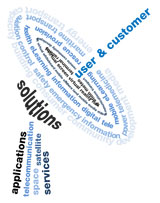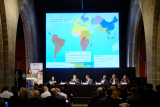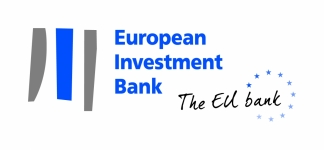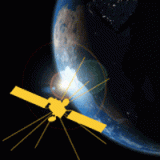ESA Call for Ideas on ARTES 3-4 Satcom Applications May 2013

The ARTES 3-4 Satcom Applications programme of the European Space Agency (ESA) is inviting public and commercial organisations to propose ideas, suggestions and business innovations for space-based applications and services related to satellite communications addressing European and Global market segments. The aim is to generate ideas that will improve business performance and operations, help enforce new regulatory standards, or enable improved resilience.
The submissions will be reviewed by ESA to identify the most promising candidates for entering the next level of the ARTES 3-4 Satcom Applications programme, aiming at operational, self-sustaining and profitable solutions.
 The ARTES 3-4 Satcom Applications programme has been created to support applications projects related to satellite telecommunications either originated by industry or in response to specific applications calls initiated by ESA. It aims to improve the competitive position of industry in ESA member states in the field of satellite telecommunications and in their associated utilisation. Being an element of the ARTES (Advanced Research in Telecommunications Systems) programme it has successfully contributed to the development, qualification, and demonstration of applications since 1998.
The ARTES 3-4 Satcom Applications programme has been created to support applications projects related to satellite telecommunications either originated by industry or in response to specific applications calls initiated by ESA. It aims to improve the competitive position of industry in ESA member states in the field of satellite telecommunications and in their associated utilisation. Being an element of the ARTES (Advanced Research in Telecommunications Systems) programme it has successfully contributed to the development, qualification, and demonstration of applications since 1998.
Core themes which are covered in this Call for Ideas include (but are not limited to) the following areas:
- eHealth (e.g. eMobility, remote medical surveillance and diagnostics).
- Security (e.g. cyber security: improve resilience to cyber incidents and reduce the cyber threat).
- Transport (e.g. train control and monitoring, Unmanned Aircraft System operations).
- Consumer Applications (e.g. digital cinema, augmented reality).
- Emergency (e.g. coordinating rescue services).
- Capacity Building (e.g. telecentre for remote community development).
- eLearning (e.g. training teachers over satellite, virtual whiteboard).
- eGovernment (e.g. counting votes by computer with results transferred over satellite).
- Energy (e.g. meter readings via satellite, offshore oil and gas field monitoring).
- Media (e.g. news streaming from remote locations).
- Any other promising topic.
The ideas submitted will be used to identify with the proposer promising ARTES 3-4 Satcom Applications projects which will likely start in 2014. Both ARTES 3-4 Study activities and Satcom Applications Projects can be financially supported by ESA up to a level of 50%.
Full details of the Call and on how to submit your ideas can be found on the IAP portal at:
http://iap.esa.int/opportunities/iap/ARTES-3-4-applications-Call-for-Id…
Your ideas and suggestions should reach us by 15th July 2013.



 More than 75 participants from SMes all over Europe attended the IAP Ambassador Platform for Small and Medium-sized Enterprises (APsme) launch event in Brussels on 6 March.
More than 75 participants from SMes all over Europe attended the IAP Ambassador Platform for Small and Medium-sized Enterprises (APsme) launch event in Brussels on 6 March.

 The Satellite-enhanced eHealth for sub-Saharan Africa (eHSA) Programme intends to deliver economically sustainable eHealth services in sub-Saharan Africa (SSA). The programme.s to federate stakeholders from various organizations along the service provision chain will shape its success. This portal serves as a tool facilitating exchange of news, contacts and discussion among the stakeholders.
The Satellite-enhanced eHealth for sub-Saharan Africa (eHSA) Programme intends to deliver economically sustainable eHealth services in sub-Saharan Africa (SSA). The programme.s to federate stakeholders from various organizations along the service provision chain will shape its success. This portal serves as a tool facilitating exchange of news, contacts and discussion among the stakeholders.

 The
The  The
The  A one-shop-stop solution for affordable access to satellite services is one step closer to the marketplace, thanks to a little ingenuity from industry and ESA.s
A one-shop-stop solution for affordable access to satellite services is one step closer to the marketplace, thanks to a little ingenuity from industry and ESA.s